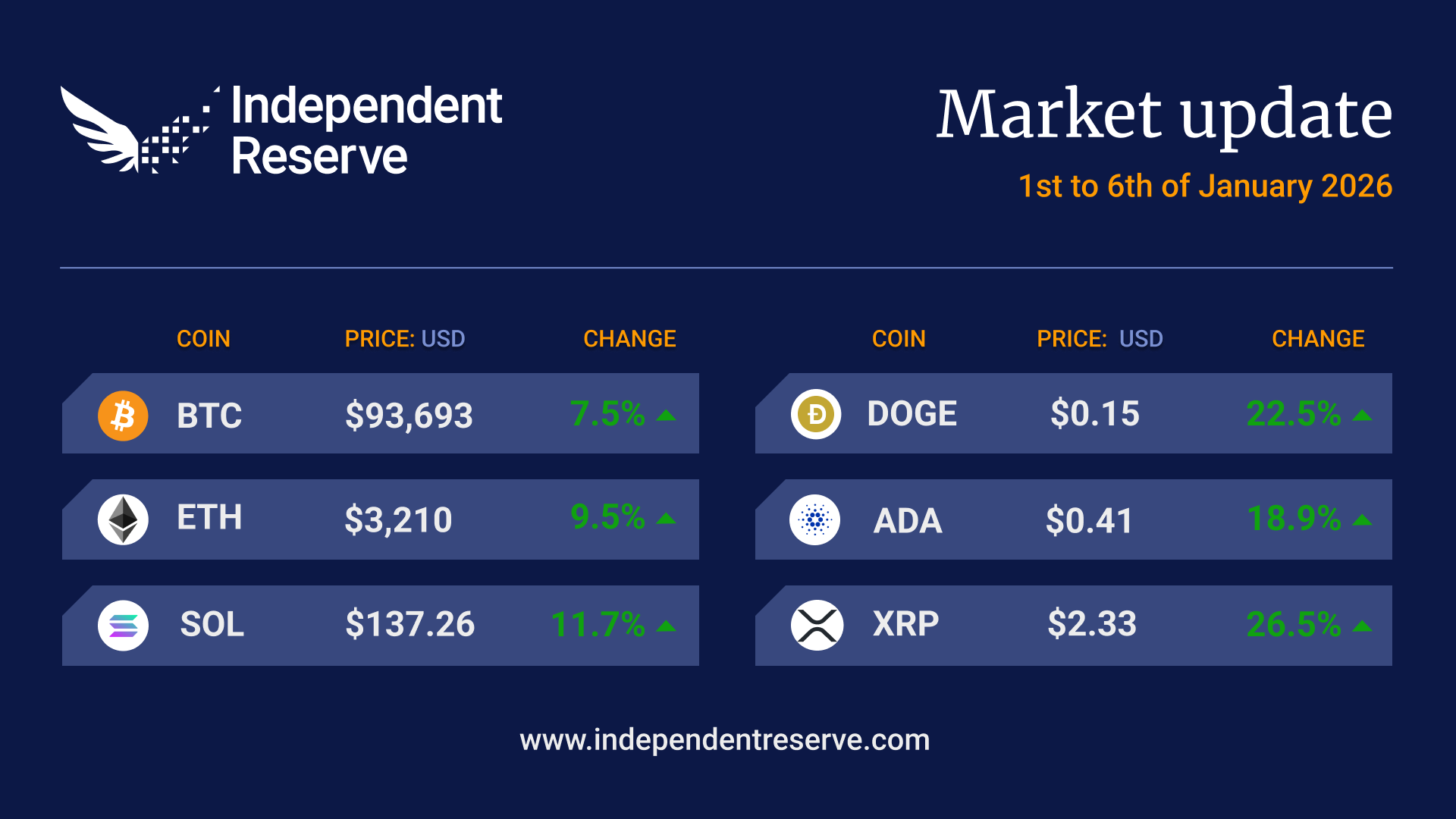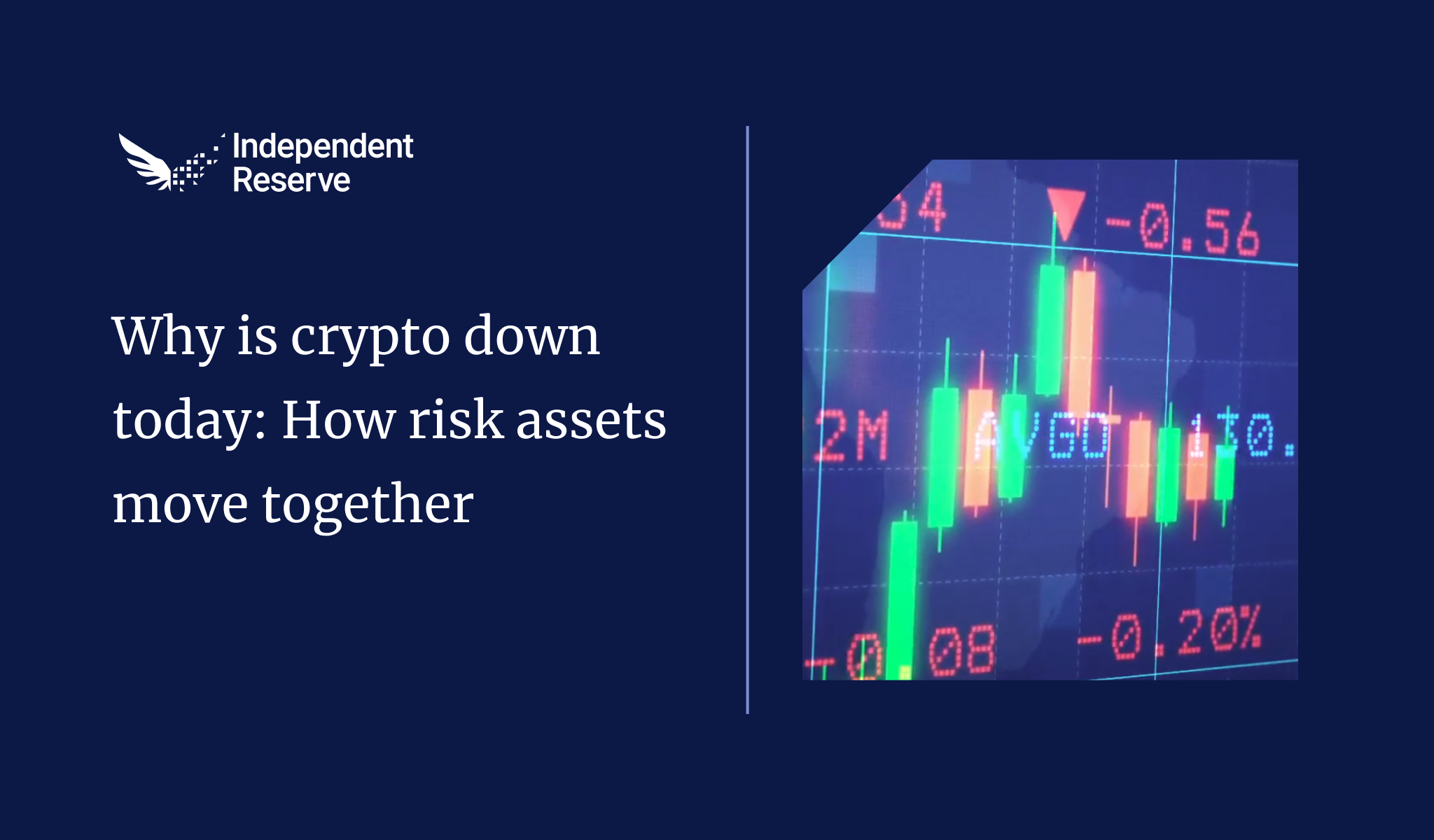In Markets
Bitcoin broke through the US$50K (A$76.4K) mark today for the first time since December 2021. Back then, we were in the grip of a retail frenzy, with Terra-Luna and FTX pumping prices, and a bunch of hype from Super Bowl crypto ads. This time around, retail interest on Google is low, and there were no Super Bowl ads – apart from President Biden’s unrelated “laser eyes” meme. “Interest rates falling, spot ETFs driving billions in new flows, halving two months away. Face-ripping rally incoming IMO,” Skybridge capital founder Anthony Scaramucci said. Bitcoin is now the 10th largest asset in the world, just ahead of Berkshire Hathaway and just behind Meta. BTC finished the week up 18% to trade around A$76,423 (US$50K) at the time of writing, while Ethereum gained 16.2% to trade around US$4,063 (US$2,662). Everything else was up, including Solana (17.1%), XRP (5%), Cardano (14.4%), Chainlink (9.3%) and Dogecoin (5.8%). The Crypto Fear and Greed Index is at 70 or Greed.

From the IR OTC Desk
50k BTC!
Cryptocurrency euphoria has continued: and while traditional risk assets have also performed positively, significant ETF inflows have been the catalyst for price acceleration. With circa two months remaining until the BTC halving, it continues to make sense that BTC will remain the key cryptocurrency in the complex. While ETH and SOL et al. may outperform BTC due to their higher beta nature, there should be no doubt that the strength of BTC floats all ships.
Last week we wrote that the euphoria of the ETF has not completely expired; but is, however, slowly fading. This week I would like to rephrase! While the immediate euphoria has reduced, the ETF inflow narrative has now become a pricing input staple. Broadly, the market remains highly attentive to the absolute volume of inflow, as well (conditionally) whether this flow is accelerating or decelerating week to week. Inflow assessment will remain a key pricing input going forward and should be monitored closely.
The retake of the USD 50k level in BTC has profiled nicely to the S&P 500 breaking through 5,000. For the S&P 500, this is the highest absolute level of the index ever. The yield on the US 10yr note remains above 4% (currently trading at 4.17%).
The benchmark yield (the 10yr UST) remains incredibly significant to risk assets and cryptocurrencies, particularly with underlying prices rising. As a stated hypothesis, the importance of yield enhancing products, many of which are in DeFi, will likely gain market attention very shortly. It remains difficult to hold highly valuable/liquid assets, without earning a risk-free return. This speaks nicely to the relative value of the ETH/BTC ratio. At some point, it can be expected that the market will focus on ETH (as well as other lending platforms) to try and earn yield. While this already exists, it only magnifies if underlying prices continue to push higher. For now, ETH/BTC may be the best proxy for this turning point.
On the OTC desk, USDT has moved above 1:1 USD. The OTC desk continues to receive interest in the top 20 tokens, mainly layer 1 tokens, although interest has slowed this week in line with the Chinese Luna New Year. Listen out for the US inflation data (January), due on Wednesday. With inflation broadly falling for the last 11 months, additional confirmation of further reduction will be welcomed.
For any further information, please feel free to reach out.
In Headlines
Bitcoin ETFs suddenly surge
After four days of inflows between US$33M (A$50.5M) and US$79M (A$121M), the Bitcoin ETFs suddenly surged to US$145M (A$222M) on Feb 7, then US$405M (A$620M) on Feb 8, and then US$541M (A$828M) on Friday – a record high since launch day. That equates to 11K Bitcoin bought by the ETFs in a day. Monday’s figures are yet to be finalised but BlackRock saw $750M (A$1.15B) in volume by mid-afternoon so they are expected to be very solid. BlackRock and Fidelity have raked in more cash in their first month than any ETF launched in the US in the past thirty years. It’s worth noting that ETFs only account for 10%-15% of the total Bitcoin spot trading volume on centralised exchanges, so many other factors still contribute to price action.
Solana knocked offline
Solana’s network of validators got stuck in an “infinite loop” last week, knocking the network offline for five hours. It was the network’s ninth outage, although they have become rarer in recent times with the previous outage in February 2023 lasting 18 hours. Weirdly, the bug had been identified on a testnet back in 2022 and a fix was created but never implemented.
Ethereum’s next big upgrade: March 13
Ethereum developers are targeting March 13 for the Dencun upgrade on the mainnet. Dencun introduces “proto-danksharding” and “data blobs” that are expected to dramatically reduce costs on L2 networks like zkSync, Optimism and Arbitrum. The decision was made after the upgrade was successfully added to the third and final Holesky testnet. Ethereum and its L2 ecosystem now have around 2 million daily users and a combined Total Value Locked around US$23.58 billion (A$36.1B).
Ethereum gas fees surge
Gas fees on Ethereum have surged, which is bad news for users, but also highlights how popular the ecosystem is. The network has taken an average of US$11.4 million (A$17.5M) in fees per day over the past week, which is around four times the fees of Bitcoin, five times the fees on Uniswap, and no other protocol has even hit US$1M per day). One reason gas fees hit a 7-month high was the ERC-404 craze. It’s an unofficial standard that combines fungible and non-fungible tokens into one and wastes a ton of gas. The first ERC-404 called Pandora, was launched on Feb 5 and gained 1,850% in a few days. A new version called DN-404 has been proposed to fix some of the issues.
ASIC’s case against BlockEarner concludes
The Australian Securities and Investments Commission has won part of its case against BlockEarner, with a court finding its Earner fixed rate yield product required it to hold a financial services licence. However, the court said its DeFi Access product, which funnelled the funds into Aave and Compound for a variable return, did not require a licence.
SEC woes continue
FOX Business reporter Charles Gasparino reported the SEC is “bracing for major exodus among senior enforcement lawyers in its crypto assets and cyber unit.” Meanwhile, six US senators took the SEC to task in an open letter to boss Gary Gensler, for the regulator’s actions in the Debt Box case, where SEC lawyers allegedly misrepresented evidence and behaved in an “unethical and unprofessional manner.” Gensler has only just responded to a separate letter from Republican senators criticising the SEC over the SIM swap attack that got control of its X account. Gensler said, “The SEC takes its cybersecurity operations seriously”, but the culprit was yet to be found.
Glassnode warns indicators at High Risk
Analytics firm Glassnode issued a report this week looking at a range of on-chain indicators, like the market value to realised value chart for long term hodlers which it says has entered the “high risk” zone. While this is normally seen in the early stages of a bull run, five other indicators have hit “high risk” or “very high risk” and only two indicators are at “low risk.
EVM chains of the world unite!
Polygon has unveiled a ‘Type 1’ prover that allows any EVM chain to operate as a ZK rollup. “It allows us to take any existing chain, whether it’s the Ethereum layer 1, an optimistic rollup or an alternative L1, we can upgrade that into zkEVM L2,” co-founder Brendan Farmer told Cointelegraph. He claimed tests had shown it could also prove mainnet Ethereum blocks for less than a third of a cent per transaction. Farmer told The Block the upcoming tech could also enable any EVM chain to become a validium (which stores data for rollups). The rollups and validiums could then connect via Polygon’s new AggLayer and become interoperable.
Until next week, Happy Trading!


